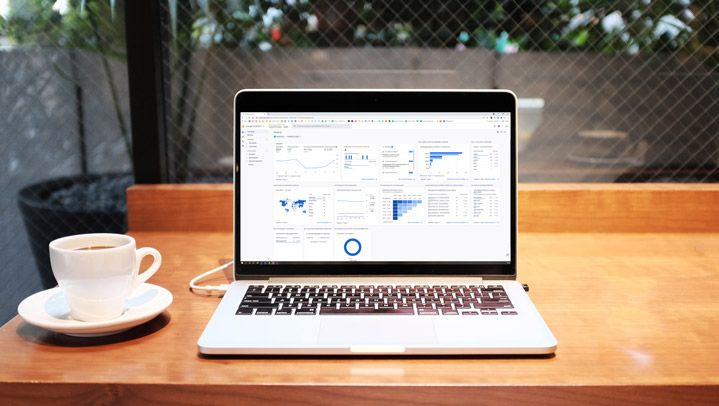Switching from Universal Analytics to Google Analytics 4 (GA4)
Answers to the 6 most important questions about switching to GA4
- Article
- Data Analytics
- Technical Web Analytics

On 14 October 2020, Google launched the new version of Analytics: Google Analytics 4 (GA4). Soon after the launch, it became clear that a number of important functionalities from Universal Analytics (GA3) were missing, and therefore the time to switch seemed far away. Fortunately, we see that the development team on the side of Google has not been idle. Some nice features have since been introduced within GA4 that have narrowed the gap between GA3 and GA4. This article answers the questions that are increasingly being asked about GA4.
Updated in April, 2023
Why switch to GA4?
One of the main reasons to switch to GA4 is that no new data will be collected in GA3 from 1 July 2023. By switching now, you still have plenty of time to set up your new properties properly without missing any data.
The main difference between GA3 and GA4 is the data model. Where the data model of GA3 is based on sessions and page views, in GA4 this is based on events. We call this an event-based data model. Every interaction of the user is measured in the form of an event. The new data model responds to a changing world, in which apps and single-page applications (SPAs) are increasingly taking on a greater role.
A major advantage of this new data model is that web and app data can be collected in one property. This allows you to get an even completer picture of the different touchpoints within the customer journey.
What are the new functionalities of the free version of GA4 compared to the free Google Universal Analytics?
For organisations currently using the free version of Google Analytics, there are already a number of features available that make it interesting to start moving to GA4:
- You have access to the Explorations functionality in GA4: an environment within Google Analytics that gives Analysts more opportunities to do analysis within the tool.
- There is no longer data sampling in the reports visible in the Report module, something many Data Analysts consider to be the major limiting factor of the free version of Google Analytics 3. Data sampling does exist in GA4's Exploration module.
- More automatic measurements are available, meaning it's easier to measure page views, scrolling behaviour, searches, outbound clicks, interactions with videos and downloads.
- In GA4, it is easy to link Google's BigQuery to the desired property. This allows raw data to be unlocked, offering more possibilities in terms of data visualisations and advanced data analytics. You can use GA4 to retrieve data for long-term insights and good data quality.
I am now using GA360. What should I take into account?
It is currently not possible to set up Views for different user groups. This will mean that a complete transition to GA4 for these organisations will be further in the future.
One thing is certain: GA4 is the future in web analytics for Google and support for GA3 will soon be discontinued.

How should we as an organisation deal with the transition from GA3 to GA4?
We deliberately call it a transition and not a migration, because a migration implies that not much needs to change on the implementation side. Because GA4 is based on a completely different data model, you don't have access to historical data and you have to build the new property from scratch. This means you need to set aside time to create and implement a new measurement plan that aligns with the new event-based data model.
It is of course possible to collect similar measurements and dimensions in the new implementation as before. Our advice is to take a critical look at the current implementation and implement improvements right away. You can improve your implementation by adding measures, but also by omitting measures that are no longer relevant.
When is the right time to switch to GA4?
Google will support Universal Analytics until July 2023 (free users) and July 2024 for paid users.
It is time for organisations to make the switch to GA4. Some tips to make the switch as smooth as possible: properly map out what data is important to see in Google Analytics, make a tag plan and implement GA4 on the website in advance. By switching on time, no data will be lost! In addition, it is possible to use both versions side by side, this way you can even compare data.
Can I get help with switching from GA3 to GA4?
As a data partner, Digital Power advises and supports organisations in the process of making the transition from GA3 to GA4. We know from experience that every organisation and implementation is unique.
We are happy to see what we can do for your organisation. Contact us.
René Westerdijk, Lead Consultant Data Analytics at Digital Power
René is a results-driven consultant with a passion for everything related to data and strategy. He joined Digital Power in 2014 as a web analyst, but over the years he has worked in many different roles for different clients. In addition to working for clients, he gets a lot of energy from coaching and guiding colleagues at Digital Power.
Receive data insights, use cases and behind-the-scenes peeks once a month?
Sign up for our email list and stay 'up to data':